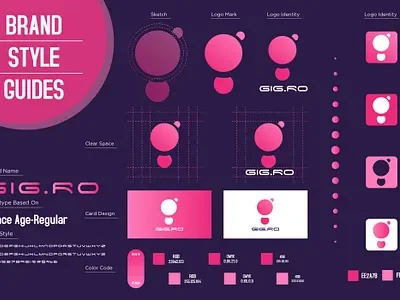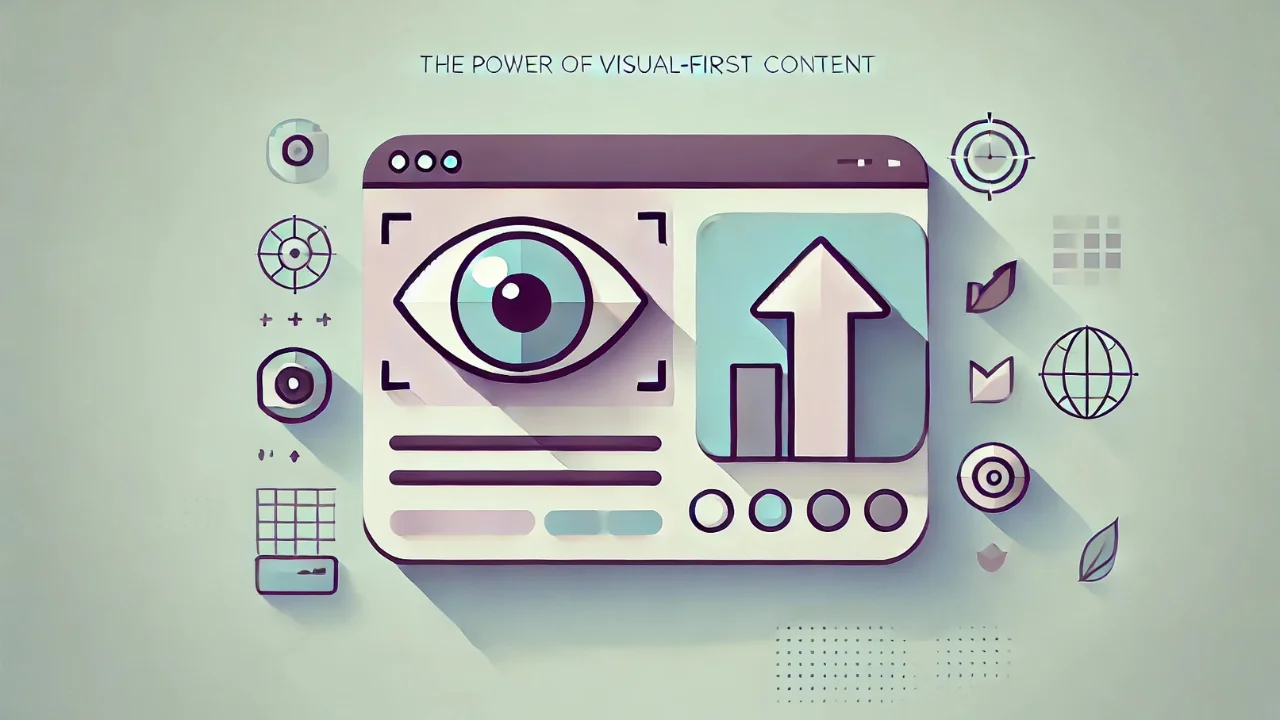The fight for user attention stands as a more intense battle today than at any previous time because of endless scroll and digital distractions. Brands must compete for both memory space as well as trust and conversion from users. Winning brands all utilize the same visual communication method which works across all platforms.
The human brain functions faster at processing images than text so visuals have the unique capability to navigate through noise while triggering emotions and generating instant responses. The information contained in an image or GIF or video transcends written paragraphs by communicating instantly. Modern design functions as strategic elements which surpass mere visual beauty.
The visual-first content revolution defines our current period as it combines strategic thinking with design elements and high-performance visual production. Thumb-stopping visuals now dominate the digital battlefield because they combine visual attractiveness with the ability to sell and educate and influence.
The success of being remembered or being skipped in 2025 depends on your ability to tell stories through visuals regardless of whether your business operates as a B2B SaaS company or lifestyle startup or established enterprise. The free presentation templates from SlideUpLift help teams produce professional-looking branded content within minutes which helps maintain consistent engagement on all platforms.
The use of visuals produces greater user involvement than text-based content
Let’s talk science.
- Our brains analyze visual information at speeds exceeding text processing by a factor of 60,000.
- Social posts containing images receive 650% greater engagement than basic text-only content.
- Human beings keep 80% of visual information in memory yet only remember 20% of text data.
Visual-first content enables both attention capture and retention and trust-building despite the overwhelming amount of available information.
What Is “Visual-First” Content?
Digital assets which communicate their main message through images before users start reading the accompanying text are classified as visual-first content. The human brain processes visuals automatically yet reading requires deliberate effort so this strategy succeeds.
Visual-first content takes the following forms which currently lead the market:
- Short-form videos (Instagram Reels, TikTok, YouTube Shorts)
- Engaging PowerPoint Presentation Templates along with Slide decks and carousels function as Intriguing content on LinkedIn and Pinterest.
- Data-driven infographics
- Animated explainers
- Meme-style branded content
- Branded quote images
- Illustrated how-tos and checklists
Why Visual Branding Matters More Than Ever
The practice of visual branding exceeds the creation of a single attractive logo. A brand needs to develop an integrated and identifiable visual presence throughout all digital platforms. Your digital “dress code” represents visual branding which helps audiences identify and remember you. Your audience can identify you in a crowded content space through your visual branding elements. Brand identity development and maintenance can be supported by backgrounds for presentations that help maintain visual coherence for new and existing brands.
A brand with consistent visuals is:
- 3.5x more likely to be recognized
- 2.4x more likely to build user trust
The chances of converting browsers into buyers increase when a brand uses visual branding.The principle of emotional connection takes precedence over repetition. The combination of excellent visual branding delivers emotional responses which share narratives that instantly convey your purpose.
Example:
Nike uses bold contrast and motion elements to showcase their powerful energetic identity
Glossier uses soft color combinations and minimalist design elements to create an impression of delicate personal care.
The templates guarantee a polished and professional look for your brand during every use of pitch decks and internal reports. A consistent visual approach develops recognition which leads to establishing trust with your audience.

Visual Strategy by Platform (With Posting Tips)
The algorithms operating on each platform function differently. The following visual analysis will break down their platform preferences.
1. Instagram (Feed, Reels, Stories)
- Visual Format: Reels for visibility, carousels for saves, stories for behind-the-scenes
- Brand Tip: Stick to a 3-color palette and use consistent filter presets
- Best Time: The optimal time for posting Reels is between 9 AM and 12 PM according to Meta data.
2. TikTok
- Visual Format: Talking-head videos, text The Power of Visual-First Content: How to Grow Your Brand on Social Media in 2025
The memory span for visuals is 80% whereas text recall stands at 20%.
3. LinkedIn
- Visual Format: Slide decks, infographics, quote graphics
- Brand Tip: Make B2B topics more human with design
- Posting Tip: Post carousels 2x/week, Monday & Thursday perform best
4. Pinterest
- Visual Format: Pins, Idea Pins (story-style), infographics
- Brand Tip: Design for vertical 2:3 ratio, optimize with keywords
- Posting Tip: Minimum 5 fresh pins/week
Top 6 Tools to Master Visual Storytelling in 2025
| Tool | Best Use | Value for Brands |
| Canva Pro | Design templates, brand kits | Great for non-designers |
| SlideUpLift | Presentations, carousels, infographics | Business-ready, editable slides |
| Lumen5 | Convert blogs into videos | Automates social video creation |
| Figma | UI/UX visuals, illustrations | Collaboration + precision |
| Onlypult | Plan + schedule your visual content | Smart calendar and analytics |
| CapCut | Quick vertical video edits | Reels, TikToks with pro-level polish |
Metrics That Prove Visuals Drive ROI
| Content Type | Avg Engagement | Avg Shares | Avg Click-Through |
| Text-only post | 1.3% | 0.4% | 1.1% |
| Image post | 4.7% | 1.9% | 3.4% |
| Video post | 6.8% | 5.1% | 6.6% |
| Slide carousel | 7.5% | 3.6% | 5.3% |
Conclusion: If your content doesn’t move or impress, it doesn’t convert.
Real-World Case Study
Brand: Mid-size productivity SaaS company
Challenge: The brand was struggling to gain traction on LinkedIn. The company struggled to achieve significant engagement with its weekly blog posts along with its extensive text-based content while its follower count showed no growth. The content failed to capture attention because it lacked visual appeal which professionals who value efficiency needed for quick value communication.
Action: The marketing team converted weekly blog content into LinkedIn carousels through SlideUpLift presentation templates as part of their visual-first approach. The carousels presented a visual story path with clear problems followed by insightful solutions and compelling results while maintaining brand-aligned design.
Result:
- 350% increase in average post reach
- 2.4x follower growth in just 60 days
- 6 qualified inbound leads directly attributed to carousel posts
- Improved content saves, shares, and profile visits
The visual-first approach both enhanced metrics and transformed the brand’s image into one that appeared approachable and credible and clear to customers.
Client Feedback:
The brand’s new visual-first approach enabled us to appear human and expert at once. We used this strategy to make complicated information simpler and establish emotional connections with our audience.
How to Build a Visual-First System in Your Team
Step 1: Define Your Brand’s Visual DNA
The brand needs to define strict rules for all visual elements which include color schemes and typography and image moods and icons and layout structures. All design standards should be gathered into either a living brand style guide or digital brand kit. The system will maintain uniformity in every web page and social media platform and advertising material and internal company documentation. Visual alignment builds brand trust over time.
Step 2: Create a Content Matrix
Determine 3–5 essential content pillars through an assessment of your business objectives and audience requirements such as Case Studies and How-To Tips and Product Features and Industry Insights and Behind-the-Scenes content. The three designated pillars should use Reels for behind-the-scenes content and carousels for tips and infographics for data presentations.
Step 3: Repurpose Weekly
Your content creation expenses will decrease while your content value increases by turning one lengthy asset into different visual content for specific platforms. For example:
- LinkedIn Carousel
- Instagram Reel
- Infographic Pin
- Branded Quote Image
- TikTok Teaser
Final Thoughts: Design with Purpose, Perform with Impact
A brand should demonstrate rather than scream for attention in the overwhelming digital space.Visual-first content isn’t about looking pretty. Visual communication enables both clear information transfer and emotional engagement and action motivation. Visual content executed correctly helps simplify complex information while building faster trust relations which makes your message visible through other competing content.
The first impression of your brand is usually created by visuals which serve as ambassadors. The user’s decision to scroll past a piece of content depends on the visuals presented. Visuals now convey messages more strongly and quicker than before because we operate in a mobile-first world.Brands that excel at visual storytelling during 2025 will obtain more than follower growth. They’ll grow communities, customers, and culture. The audience will notice your brand while remembering it which leads to sharing opportunities. The most crucial benefit they will achieve is creating meaningful scalable impact through one image and one reel and one carousel at a time.
So, invest in your visuals. Visuals function beyond design to become your digital voice while acting as a silent salesperson and delivering powerful storytelling for your brand.




